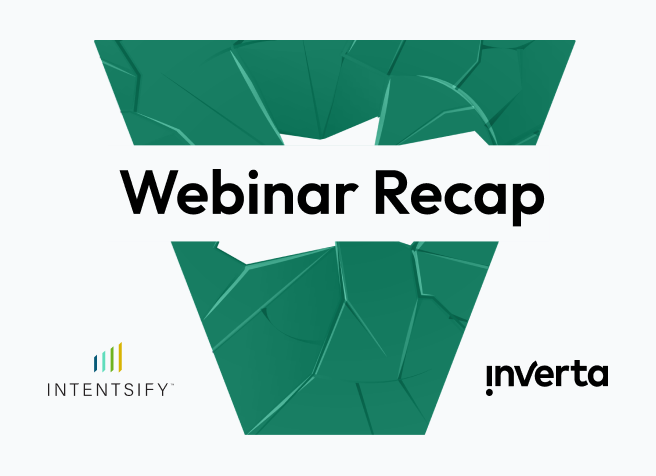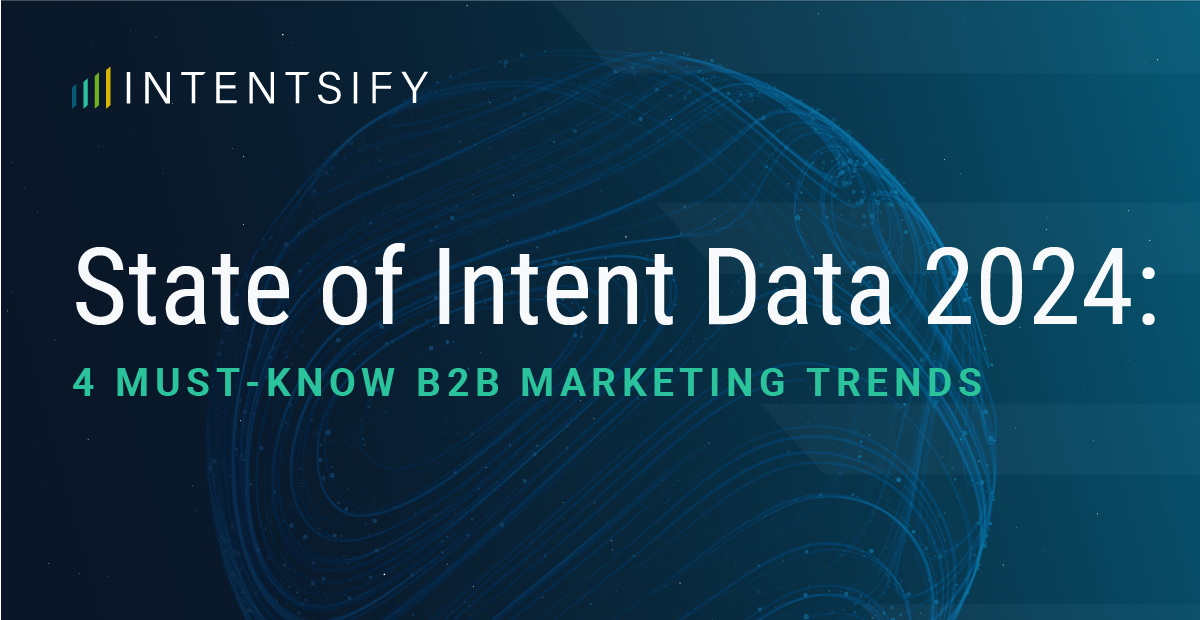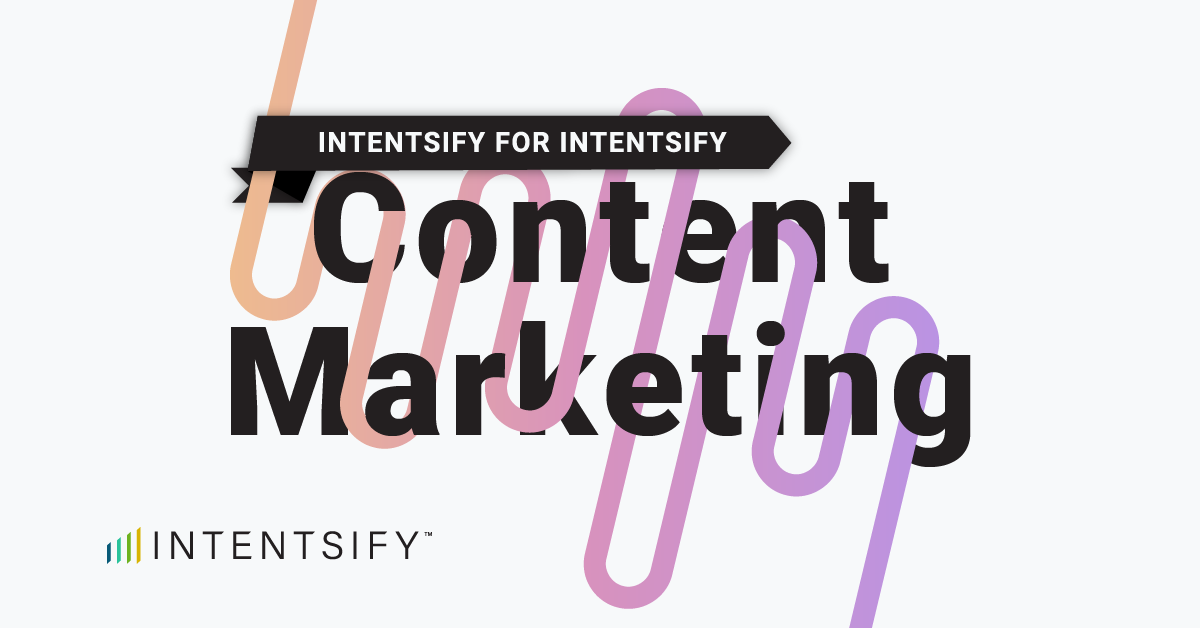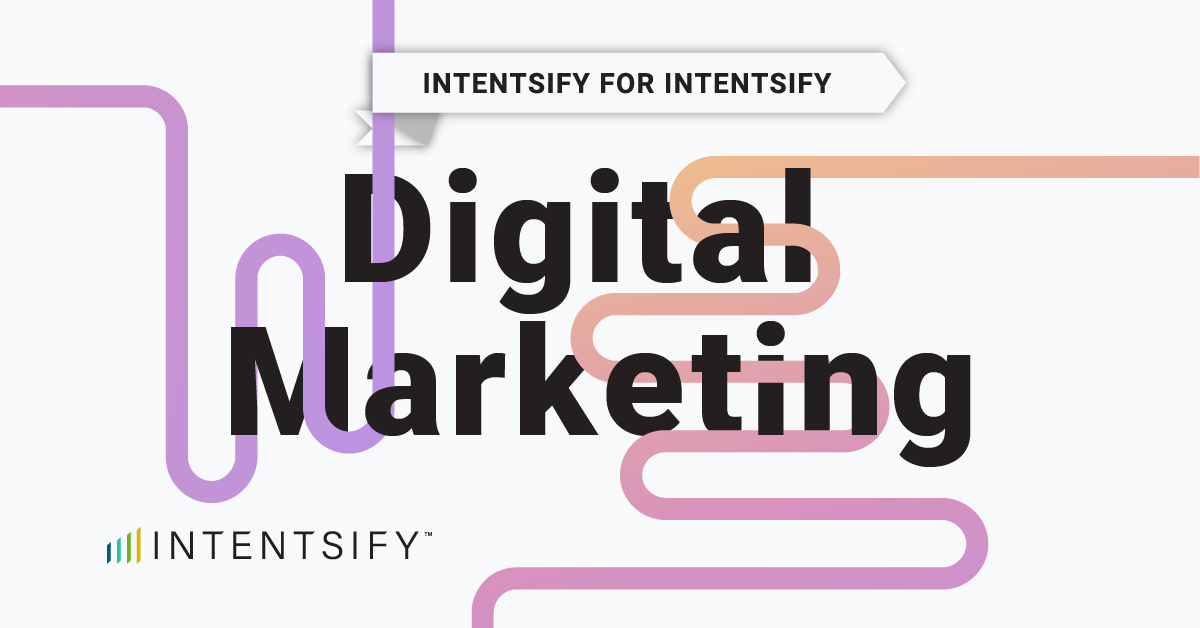The traditional marketing funnel isn’t just outdated — it’s actively sabotaging B2B marketing success. In our recent 90-minute webinar, marketing leaders from NVIDIA, Sysdig, Intentsify, Inverta, and Fenwick shared battle-tested strategies for rebuilding marketing foundations around buying groups instead of individual leads.
The reality? B2B buyers don’t move through neat, linear funnels. With 9-15 people involved in deals over $250K, it’s time to evolve from chasing MQLs to orchestrating account movement and buying group engagement.
Here’s everything you need to know from our six rapid-fire sessions.
Session 1: Propensity Modeling 101
Big Takeaway: The traditional MQL approach misunderstands modern B2B buying behavior. Success requires shifting from individual lead scoring to understanding buying group dynamics and using AI-based propensity modeling to identify the right moments for marketing and sales engagement.
“Marketing qualified leads [are] the bane of our existence,” declared Ari Capogeannis from NVIDIA. “We’re just tossing stuff over the fence based on a dungeons and dragons era style point scoring system.”
The problem? Traditional lead scoring creates a fundamental disconnect between marketing and sales. Marketing sees engagement data from their martech stack, while sales operates from CRM data in their own silo. Neither has the complete picture of account relationships.
The Buying Group Solution
Modern B2B marketing requires a holistic view of account engagement. Instead of scoring individual leads, successful teams focus on buying center members across core roles from practitioners to executives.
Four Types of Propensity
NVIDIA has moved beyond simple intent data to measure four distinct types of propensity:
1. Propensity to Engage (2-4 years from purchase)
2. Propensity to Buy (when ~75% of buying group is engaging)
3. Propensity to Buy Again (upsell/renewal opportunities)
4. Propensity to Churn (risk indicators)
The key insight: Intent data without context is dangerous. “Where we’ve shot ourselves in the foot in the past is basically saying, okay this account is surging. So I’m told I should kick them all over to sales,” Capogeannis noted. Instead, early intent signals should trigger marketing nurture, not sales handoffs.
When NVIDIA identifies the right buying group engagement patterns, they see 100% reply rates from their target accounts — a stark contrast to spray-and-pray outreach.
Session 2: MQLs, MQAs, and Buying Groups
Big Takeaway: Understanding buying groups is only the first step — the real challenge is transforming your entire marketing and sales operation to support this new approach. Sysdig’s journey shows that successful transformation requires both compelling business cases and organizational alignment.
The Forcing Function
Rich Copenhagen from Sysdig was refreshingly honest about what drove their transformation: budget pressure. “Now that the market has been softened a bit for a couple of years and it’s harder to sell, there’s a big overhang from AI. We need to get really focused and smart about how we’re spending our time and money.”
Getting Sales Buy-In
The key to sales alignment? Show them the data. “Looking at our reps that have hit quota in the last couple of years, the vast majority of them have had a big whale,” Copenhagen explained. “Then you back out all the way to the MQA thing and say, this is what marketing is going to promise you… and the sales team goes, ‘Oh, I see why that’s valuable. I need the whale.'”
What Happens to MQLs?
MQLs don’t disappear — they evolve. Instead of triggering immediate sales calls, MQLs become moments when marketing starts surrounding accounts with relevant content and experiences.
The ICP Revolution
Sysdig’s journey from targeting “companies with $1B+ in revenue” to sophisticated technographic and behavioral targeting paid dividends. Working with Inverta, they shifted focus from deal size to net retention and lifetime value.
“That was a big eye opener for me this year,” Copenhagen reflected. “If you can drive that account selection for the highest retention and growth potential companies… you’re lining up all your go-to-market engines.”
Session 3: Campaign Overhaul
Big Takeaway: Once you’ve secured organizational buy-in for buying groups, the next hurdle is completely rebuilding your campaign strategy. The goal isn’t to abandon lead generation — it’s to orchestrate it around filling specific buying group roles rather than hitting arbitrary MQL targets.
The ABM Overcorrection
Many teams made a critical error when adopting ABM: they abandoned the “who” entirely in favor of accounts. As Intentsify’s Hannah Swanson noted, “We ended up moving into what felt like a brand play with inflated costs.” Inverta’s Jessica Fewless noted, “We were handing over these accounts to sales and saying, ‘go get them’ and they’re like ‘cool. But who, exactly?'”
The Fill-in-the-Blank Strategy
Intentsify approaches every target account like a fill-in-the-blank exercise. The blank spaces are the personas you need to confirm and convert in order for a conversation with sales to even go anywhere. Their CRM includes empty fields for each buying group role:
- Demand gen champion
- Data science champion
- Executive decision maker
- Marketing ops influencers
- Finance/procurement contacts
- Other deal influencers
“Our lead gen programs are focused on filling in those blanks,” Swanson explained. “Once we have a few of those personas confirmed, we’re watching these intent trends. This is where it’s important to have persona-level intent data.”
New Success Metrics
The shift requires completely different measurements:
Stop measuring:
- MQLs generated by marketing
- MQL-to-SQL conversion rates
- Last-touch attribution
- Marketing vs. sales sourced opportunities
Start measuring:
- Buying group engagement levels
- Account-level intent + engagement combined
- Channel performance by journey stage
- Deal velocity
The Timeline Reality
“Isn’t this going to take longer? Absolutely,” Fewless admitted. But the front-end investment pays off. “If you have a buying cycle that is typically 9, 12, 16 months that’s typically measured by how long sales is talking to that account? I think what you’re going to see is that definition of a buying cycle is going to actually shrink because so much more of the buying journey is happening before they ever talk to sales.”
Session 4: Content as Fuel
Big Takeaway: Rebuilding campaigns around buying groups is impossible without the right content foundation. But most organizations approach content backwards — creating first, then figuring out distribution and audience fit. The most successful teams involve content strategists early and use buyer intent data to guide creation.
The Content Crisis
“By the time it usually gets to a content team, the focus is so inward on what the company wants that it really has no resonance with anyone outside of the company,” observed Chris Gillespie from Fenwick.
The solution? Involve content teams early in campaign planning, not as an afterthought.
The Three-Circle Framework
Effective content exists at the intersection of:
1. What buyers want (their genuine interests)
2. What serves your goals (business objectives)
3. What’s true and credible (authentic expertise)
“There’s nothing more expensive to market than a broken message,” Gillespie emphasized.
Intent-Driven Content Strategy
At Intentsify, we use our own tech to guide content creation and understand what our audience is looking for. First, you can do this by mapping your content to actual buyer research stages not generic funnel stages.
“Data-backed content,” as Intentsify’s Meghan Crook Brisson described it, ensures you’re creating what buyers actually want to consume. Gillespie added, “And if you’re putting something out there that nobody wants, you’re going to pay a lot of money getting it out there.”
Distribution-First Thinking
Before creating any content, teams must answer three questions:
1. What channels do we have access to?
2. What’s the content’s purpose?
3. Do we have budget to promote it?
“Content itself is not a channel,” Brisson noted. “Content needs to fuel your channels, it has to have a container.” Once you know the content solves your original problem statement and you have alignment with how it will be promoted, then you can get creative with format and creation. That’s the power of involving your content team earlier. Instead of being asked “what content do we have?” you can discover together “what content you need.”
Session 5: Aligning Brand and Demand
Big Takeaway: Having the right content is only valuable if you can orchestrate it across channels to reach different buying group members at the right moments. This requires sophisticated retargeting strategies and consistent messaging that builds recognition through repetition — not random acts of marketing.
The Intent-Driven Workflow
Intentsify has built what Swanson calls a “moving cycle of activities” that gets smarter over time. It starts with intent sources — the research behaviors of prospects, first-party data from your CRM, and social media actions buyers are taking. All of these inputs feed into an intent model that identifies buying group engagement patterns.
This intelligence then powers targeted display advertising and content syndication programs. Those programs generate two critical outputs: leads from content syndication and engagement data from display campaigns. When these work together, you gain deeper buyer insights that improve conversion rates and create more pipeline opportunities.
“Those outputs are always going to become inputs for your next program,” Swanson explained. It’s a continuous learning system that evolves rather than a series of disconnected campaigns.
The Psychology of Consistency
Kenna Rooney emphasized that successful marketing leverages basic psychology: “If you see or say something once, odds are you’re going to forget it. But if you see something or say something at least three times, you’re more prone to naturally remember it.”
This insight drives Intentsify’s execution strategy. We ensure the same message, colors, and user experience appear across every touchpoint — from display ads to content syndication, paid social campaigns, and organic landing pages. The goal isn’t just brand consistency; it’s creating the repetition necessary for memory formation in busy B2B buyers who are bombarded with marketing messages.
Progressive Retargeting Strategy
Rather than serving the same content repeatedly, Intentsify moves buyers through stages:
1. Content syndication lead downloads awareness content
2. Retarget with brand-based ads to build recognition
3. Transition to consideration content (case studies, demos)
4. Serve across multiple channels (programmatic, social, email)
5. Repeat for each buying group persona
The Multi-Persona Reality
For Intentsify, this means creating distinct messaging for demand gen marketers, data scientists, marketing ops, CMOs, and finance/procurement — each with different priorities and evaluation criteria.
Session 6: The Reality Check
Big Takeaway: Even with perfect strategy, content, and channel orchestration, most buying group transformations fail due to implementation missteps. The difference between success and failure often comes down to change management, not marketing tactics.
The Five Critical Pitfalls
Based on dozens of client implementations, Inverta’s Kathy Macchi identified the most common transformation failures:
1. Skipping organizational buy-in
“The first step is you hvae to get buy-in from everyone. This is not just a technical issue.” Prove the business case with your own data — show that multi-threaded deals close faster, larger, with higher win rates.
2. Over-engineering from the start
“Everyone tries to build this really complex definition of an MQA… you do better starting with a pilot.” Get a few interested reps involved in testing and refining rather than creating perfect theoretical frameworks.
3. Excluding sales from the process
“Marketing is so excited, they’re like, ‘well, I don’t want to mess with sales right now. I’m going to prove it on my own’… then when they roll out this big MQA definition, they’re shocked that sales just ignores them completely.”
4. Misaligning stakeholders
“Sometimes ops or the campaigns team forgets about the rest of the marketing team. Marketing has to change as much as sales… your paid media, your digital team, your field team, and content team will have to change their approach. Make sure you’re getting your whole team involved in the transformation.”
5. Measuring the wrong things
When leadership still focuses on speed-to-lead while marketing pushes account insights, “that whole thing’s just going to derail.” Ensure shared definitions, workflows, and success metrics. During the transition, run dual dashboards to start proving overtime that the MQA is a better indicator of success than the MQL.
The Ongoing Evolution
“I can guarantee that no one’s getting this right out of the box,” admitted Intentsify CMO Allie Kelly. “This really has not been a clearly designed strategy where we’ve tested it over a long period of time… it’s still new, and it’s evolving.”
The key is maintaining constant feedback loops with all stakeholders, especially customer success teams who often have the best insights into what makes accounts successful long-term.
The Path Forward: Key Actions for Marketing Leaders
The traditional funnel isn’t just broken — it’s actively working against modern B2B buying behavior. Here’s how to start your transformation:
- Build propensity models – Shift from lead scoring to buying group engagement patterns using holistic data across marketing and sales systems.
- Prove the MQA business case – Analyze your closed-won deals to show that multi-threaded opportunities close faster, larger, and with higher win rates.
- Redesign campaigns as fill-in-the-blank exercises – Treat each target account as having specific buying group roles to identify and nurture, not random MQL targets to hit.
- Involve content teams early – Include content strategists in campaign planning, not just execution, and use intent data to guide what buyers actually want.
- Create consistent cross-channel experiences – Ensure the same message, design, and user experience across all touchpoints to build memory through repetition.
- Start with pilots, not perfection – Test MQA approaches with willing sales reps and iterate based on feedback rather than over-engineering complex definitions.
This transformation requires patience, alignment, and willingness to measure success differently. But for organizations ready to make the shift, the results are compelling: faster deal velocity, larger deal sizes, and higher close rates.
The funnel is broken. It’s time to build something better.
Watch the webinar on-demand:






